For most of us who have been behind the wheel for more than a couple of years, the colors and meanings of street and road signs are second nature. Green means go. Red means stop. Orange means there’s hazards or road work ahead. Our mind seems to react instantaneously to these colors without having to pause and think about it.
But what about blue, green, brown, or that fluorescent yellow-green that can catch your eye a mile away? According to the MUTCD, the color of a roadway sign is an important indicator of the information it contains. So too is the shape of the sign.
If you can’t say for certain what a pink diamond-shaped sign means though, you’re not alone. (Can you even picture one?) With that in mind, we put together a quick refresher on the colors and shapes of road signs and what they mean. Familiarize yourself with each of these and you’ll be doing your part to make roads safer and more efficient for all.
 Red
Red
This is the one everybody knows. Whether it’s on a sign, a traffic light, or a police car’s siren, you should always stop when you see red. Some common signs that use red include stop, yield, wrong-way and do not enter.
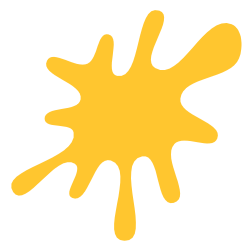 Yellow
Yellow
Yellow is probably the most ubiquitous of all the sign colors, and yellow signs run the gamut from curves to crossings to obstacles to advisory speeds. The thing they all have in common is that they are warning signs that indicate changes to the driving environment and you should be alert.
 Orange
Orange
Orange signs are typically used to denote a temporary construction zone. Some examples can include road closures, detours, and work crews present.
 Pink
Pink
According to the MUTCD, pink signs are to be used for “incident management.” This means that unlike orange signs, which are used temporarily but for planned purposes, pink signs are used at unplanned events like car accidents.
 Blue
Blue
If you’re a fan of road trips, chances are you’ve kept an eye out for blue signs—they’re the ones that tell you when a hotel, restaurant, or gas station is coming up.
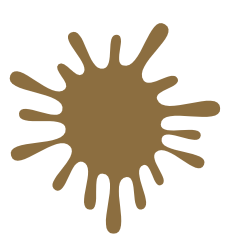 Brown
Brown
Similar to blue, brown is used for services and recreation signs, including federal and state parks, historic buildings, museums, and zoos. Watch for these if you’re itching for an outdoor or cultural experience.
 Green
Green
Green signs offer directional guidance to drivers, including travel distances to various destinations, upcoming freeway exits, junctions, and mile markers. Green is also often used on parking signs.
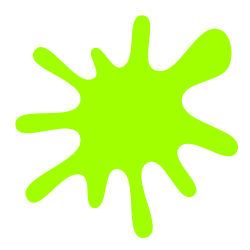 Yellow-green
Yellow-green
We wrote a whole article about the history of yellow-green signs, but to keep it brief: Since 1998, this color has been included in the MUTCD for pedestrian, bicycle and school crossings, and since 2009, it has been required for all school zone warning signs. If you see a flash of yellow-green, slow down and be alert for kids!
 Black and white
Black and white
Black and white signs are regulatory, meaning they are legally enforceable (versus advisory signs, which are more of a “recommendation”). These signs are meant to notify drivers of various regulations, including speed limits, one-way streets, and HOV lanes.
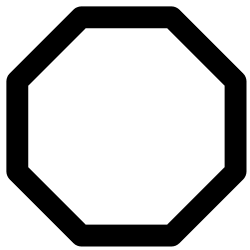 Octagon
Octagon
There’s only one of these, and we all know what it means—STOP.
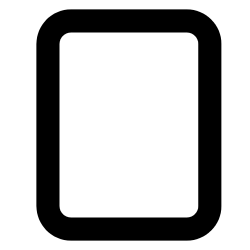 Vertical rectangle
Vertical rectangle
Rectangular signs most often communicate speed limits and parking regulations, but they can also be used to inform drivers of mandatory movements (e.g. lane must turn right).
 Diamond
Diamond
These signs almost always alert you to road hazards. They are generally yellow, orange, or pink in color.
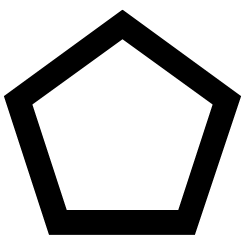 Pentagon
Pentagon
We’re not sure why, but there’s only one sign in the MUTDC handbook on road signs that uses the pentagon shape and that is the school crossing sign.
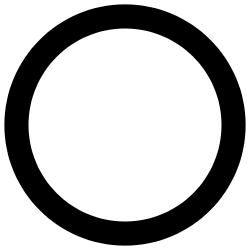 Circle
Circle
Another singular sign shape is the circle: Only the railroad crossing ahead sign makes use of this shape. (Although in many areas of North America, the so-called “crossbuck” is more common for railroad applications).
Transportation departments have taken a great deal of care in making road signs uniform across the country, making it easier for drivers—and other road users—to travel safely to their destinations. Knowing the information communicated by the shape and color of a sign will let you know far in advance how to modify your driving.
Do you need a sign for an upcoming project? Our LED-Enhanced Signs are available in a wide range of sign types and have been proven to increase visibility and driver compliance from crosswalks to school zones to parks, shopping malls, hospitals and more.